Radeon HD 7950 3 GB: Six Cards, Benchmarked And Reviewed
Skip to main content
When you purchase through links on our site, we may earn an affiliate commission. Here’s how it works.
The Radeon HD 7950 has had a fairly quiet run since its release a little over four months ago, with many customers taking either a step up to the Radeon HD 7970 or a step down to an overclocked Radeon HD 7870. This is regrettable, since the Radeon HD 7950 actually beats the other two cards in efficiency.
Now that the cheaper (and even more efficient) GeForce GTX 670 is readily available at major retailers, the Radeon HD 7950 is starting to come down in price, mostly in the form of rebates. As vendors get realistic about the Tahiti-based board’s competitive position, it should become more affordable for a greater number of gamers, effectively taking over the higher middle-class role in AMD’s line-up from the Radeon HD 6950.
Today, we’re taking a look at the Radeon HD 7950 in its new role. By now, the card is available in a variety of versions, and we have six boards engineered for different strengths. Some overclock well, while others are designed to operate as quietly as possible. We’re also including video to demonstrate the acoustic characteristics of each card, believing that graphs sometimes fall short when it comes to conveying this very important aspect of a card’s performance. If you are in the market for a graphics card in this segment, you’ll know what to buy once AMD’s boards reach a price with which you’re comfortable.
Five Custom Designs And One Reference Model
We have a quintet of custom Radeon HD 7950 cards from AMD partners, in addition to a reference card from HIS. Naturally, you pay the least for the reference version, making it an ideal choice for fans of water cooling, who’ll rip off that heat sink anyway.
Here are the specs for the six graphics cards. The prices don’t include rebates, though many of these vendors are pulling prices down substantially by offering money back.
Swipe to scroll horizontally
| HIS H795F3G2M | HIS HD 7950 IceQ Turbo | Sapphire HD7950 OC | Asus HD7950-DC2T-3GD5 | MSI R7950 Twin Frozr 3GD/OC | PowerColor PCS+ AX7950 3GBD5-2DHPP | |
|---|---|---|---|---|---|---|
| Shaders | 1792 | 1792 | 1792 | 1792 | 1792 | 1792 |
| Texture Units | 112 | 112 | 112 | 112 | 112 | 112 |
| Full Color ROPs | 32 | 32 | 32 | 32 | 32 | 32 |
| Graphics Clock | 800 MHz | 900 MHz | 900 MHz | 900 MHz | 880 MHz | 880 MHz |
| Texture Fillrate | 89.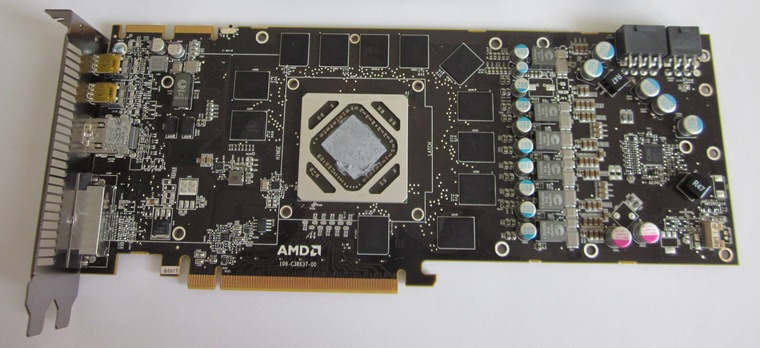 6 GTexel/s 6 GTexel/s |
100.8 GTexel/s | 100.8 GTexel/s | 100.8 GTexel/s | 98.6GTexel/s | 98.6GTexel/s |
| Memory Clock | 1250 MHz | 1250 MHz | 1250 MHz | 1250 MHz | 1250 MHz | 1250 MHz |
| Memory Bus | 384-bit | 384-bit | 384-bit | 384-bit | 384-bit | 384-bit |
| Memory Bandwidth | 240 GB/s | 240 GB/s | 240 GB/s | 240 GB/s | 240 GB/s | 240 GB/s |
| Graphics RAM | 3 GB | 3 GB | 3 GB | 3 GB | 3 GB | 3 GB |
| Transistors (Billion) | 4. 31 31 |
4.31 | 4.31 | 4.31 | 4.31 | 4.31 |
| Process Technology | 28 nm | 28 nm | 28 nm | 28 nm | 28 nm | 28 nm |
| Power Connectors | 2 x 6-pin | 2 x 6-pin | 2 x 6-pin | 2 x 6-pin | 2 x 6-pin | 2 x 6-pin |
| Price (Street) | $410 | $405(for 800 MHzversion) | $410 | $430 | $380 | $380 |
Aside from HIS’ submission, all of these cards are overclocked by default. Unfortunately, the HIS HD 7950 IceQ Turbo (running at 900 MHz) isn’t available in North America, though there’s an 800 MHz model with the same cooler.
- 1
Current page:
Six Radeon HD 7950s, Rounded-Up
Next Page HIS HD 7950 IceQ Turbo
Get instant access to breaking news, in-depth reviews and helpful tips.
Contact me with news and offers from other Future brandsReceive email from us on behalf of our trusted partners or sponsors
Tom’s Hardware is part of Future US Inc, an international media group and leading digital publisher. Visit our corporate site .
©
Future US, Inc. Full 7th Floor, 130 West 42nd Street,
New York,
NY 10036.
Radeon HD 7950 review | Eurogamer.net
As Nvidia continues to roll out its stack of second-generation Kepler graphics cards, we couldn’t help but adjust our focus towards AMD and wonder what’s going on in the red corner. To the best of our knowledge, we won’t be seeing any new desktop GPU products from the firm until the latter end of the year, and in the meantime we’re left with just the recently released £100/$140 effort, the rather decent Radeon HD 7790, and new editions of last year’s offerings — the price/performance king being the HD 7950.
Available these days for around £230/$299, this card may not have the out-and-out performance of the top-end HD 7970 but it is very easily overclockable, with the card voltage locked to ensure that any tinkering is unlikely to have adverse effects on the card. Up against the green corner, the stock version can’t quite match Nvidia’s GeForce GTX 670 in performance terms, but it’s priced more cheaply as a consequence and, provided you get a decent chip, overclocking should take you to a comfortable mid-point between GTX 670 and GTX 770 performance — effectively GTX 680 level then, not bad at all for the price.
But what intrigues us most about it is its 3GB of onboard GDDR5. Right now, that additional gigabyte of RAM sits there virtually unused by the vast majority of games, offering absolutely no performance advantage over the more common 2GB cards. It’s mostly there in order to facilitate a 384-bit memory bus — necessary to compete with the more efficient Nvidia offerings that perform the same or better with a 256-bit interface and less RAM. But the usefulness of that additional memory could change significantly as we move into the next-gen era, with the 8GB of unified RAM present in both consoles offering an architectural advantage over the split-pool set-up seen on PC. Already we’ve seen hints of developers pushing the envelope — the Killzone: Shadow Fall demo from the February PlayStation 4 reveal uses 3GB RAM for graphics in its pre-production state, and when we approached developers to discuss how to future-proof your PC, all of them stressed the need to buy a graphics card which as much onboard video RAM as possible.
But the usefulness of that additional memory could change significantly as we move into the next-gen era, with the 8GB of unified RAM present in both consoles offering an architectural advantage over the split-pool set-up seen on PC. Already we’ve seen hints of developers pushing the envelope — the Killzone: Shadow Fall demo from the February PlayStation 4 reveal uses 3GB RAM for graphics in its pre-production state, and when we approached developers to discuss how to future-proof your PC, all of them stressed the need to buy a graphics card which as much onboard video RAM as possible.
The Radeon HD 7950 may sit just under the top tier of current GPU performance in the £300/$400 bracket, but the non-boost version that we have here is priced accordingly, and that extra 1GB of video RAM is effectively being given away for free — as far as we’re aware, it is the cheapest 3GB graphics card currently on the market today. Suddenly that year-old tech is starting to look a whole lot more interesting. ..
..
«GDDR5 memory options and AMD’s choice of a 384-bit memory bus explains the 3GB configuration — an extravagance for now but potentially very useful once the next-gen consoles arrive.»
Caption
Attribution
So where does the card sit in AMD’s current line-up? The processor giant’s most popular cards are the keenly priced Radeon HD 7850 and its more expensive HD 7870 partner, offering 16 and 20 compute units respectively. The HD 7950 is step beyond that, offering up 28 compute units plus a 384-bit memory bus, offering up a 50 per cent increase in memory bandwidth over the cheaper cards. Core frequency is 850MHz, but newer versions of the tech will auto-boost up to 925MHz provided thermal headroom is available (our card is vanilla, lacking this feature). Gigahertz Editions are also available, but we found that our vanilla HD 7950 was absolutely rock solid at 1020MHz, with RAM stable at 1370MHz (5. 48GHz effective). Getting that extra performance was as simple as moving a couple of sliders within the AMD Catalyst control panel.
48GHz effective). Getting that extra performance was as simple as moving a couple of sliders within the AMD Catalyst control panel.
But at stock levels, what can you expect from a standard card? Well, we kick off our analysis with the same kind of testing criteria we used to judge performance on the considerably more expensive GTX 770. We’re running the «Welcome to the Jungle» stage of Crysis 3 at high settings with very high quality textures engaged. Anti-aliasing saps performance considerably in this game — even if you’re running with three Titans in SLI — so we’ve opted to retain our standard SMAA 2x medium preference, while v-sync is engaged in order to kill tearing. It’s a tough challenge for the card — we’re essentially putting it through an extremely demanding test that a GPU costing over 40 per cent more failed to comprehensively ace, and once again we’re running at both 1920×1080 (1080p) and 2560×1440 resolutions. Our test set-up remains the same — we’re utilising a Core i7 3770K overclocked to 4. 3GHz, married up with 16GB of DDR3 RAM running at 1600MHz.
3GHz, married up with 16GB of DDR3 RAM running at 1600MHz.
«Crysis 3 performance can leave a little to be desired in terms of frame latency and lowest frame-rates, but overall it’s a good deal for the price.»
Crysis 3 at high settings with SMAA 2x and v-sync engaged. Here we’re comparing 1920×1080 and 2560×1440 performance with the card running at stock frequencies.
Alternative comparison:
- Crysis 3: GeForce GTX 770 vs. Radeon HD 7990 vs. Radeon HD 7990 (overclocked)
Clearly, you get what you pay for. Performance is degraded compared to the GTX 770 at stock settings as you would expect, but we were surprised at just how close the HD 7950 came once our overclock was in place (there’s a supplementary video that demonstrates the difference at 1440p). At the standard clock speed, we were a touch disappointed at the varying latency in frame delivery though — even at 1080p. The ride didn’t feel particularly consistent and while 2560×1440 offered up considerably lower frame-rates across the board, we felt that overall performance was more level overall — a curious state of affairs.
However, factoring in the price point, plus the hitherto unknown advantages that the additional gigabyte of RAM may offer once next-gen console arrives, not to mention the rock solid overclocking potential in the card, the HD 7950 is clearly good value now. Just about the only tangible disappointment from this XFX model was that the dual-fan set-up was rather loud, even in comparison to the GTX 670 reference design’s blower with its somewhat annoying whirr. However, clearly on a general level, AMD thrives on value and with the arrival of additional GTX 700 series cards for release across the summer with no direct AMD counterparts to rival them, we could well see prices on the HD 7950 fall still further.
So how does the card stack up across a range of other games versus the more expensive Nvidia offerings we’ve recently taken a look at? The game engine benchmark tests offered up by Metro 2033, Sleeping Dogs, Tomb Raider, BioShock Infinite, Hitman: Absolution and Metro: Last Light offer up plenty of data we can sink our teeth into. We kick off with metrics taken at 1080p with every conceivable quality setting (bar PhysX and Tomb Raider’s TressFX) dialled up to the max. Additionally, in order to show some kind of context to the figures and to show the ebb and flow of performance, we’ve also included a video benchmark too, showing how everything plays out in real time.
We kick off with metrics taken at 1080p with every conceivable quality setting (bar PhysX and Tomb Raider’s TressFX) dialled up to the max. Additionally, in order to show some kind of context to the figures and to show the ebb and flow of performance, we’ve also included a video benchmark too, showing how everything plays out in real time.
Visualising benchmark runs puts raw numbers into context. Here you can see how the Radeon HD 7950 at stock frquencies matches up to its more expensive rivals — the GeForce GTX 670, GTX 680 and the new GTX 770. Overclocking the AMD card effectively gives you GTX 680 class performance.
«The HD 7950 lags behind the more expensive Nvidia competition on all but the most bandwidth intensive tests, but overclocking makes it very competitive.»
| 1920×1080 | GTX 670 | GTX 680 | GTX 770 | Radeon HD 7950 | Radeon HD 7950 (OC) |
|---|---|---|---|---|---|
| BioShock Infinite, DX11 Ultra DDOF | 69. 7FPS 7FPS |
75.1FPS | 77.3FPS | 58.6FPS | 66.6FPS |
| Tomb Raider, Ultra, FXAA | 78.7FPS | 89.7FPS | 94.2FPS | 75.3FPS | 87.6FPS |
| Metro 2033, Very High, 4x MSAA | 31.0FPS | 32.5FPS | 33.5FPS | 33.5FPS | 36.5FPS |
| Metro: Last Light, Very High, SSAA | 26.5FPS | 31.5FPS | 33.5FPS | 27.0FPS | 30.5FPS |
| Hitman: Absolution, Ultra, 8x MSAA | 31.4FPS | 33.4FPS | 33.7FPS | 32.4FPS | 36.7FPS |
| Sleeping Dogs, Extreme | 39.1FPS | 44.9FPS | 48.0FPS | 40.8FPS | 46.8FPS |
For a card that’s costs so much less compared to the opposition — even the GeForce GTX 670 — the Radeon HD 7950 hands in some fairly strong figures. Nvidia absolutely dominates in BioShock Infinite in particular, but the gap closes a touch in Tomb Raider and suddenly the HD 7950 looks much more competitive on every other benchmark we have.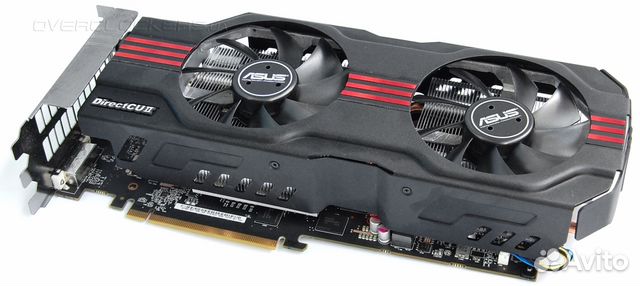 It’s only a shame that we didn’t have the GeForce GTX 660 Ti to hand to see how Nvidia’s cheaper offering would have stacked up.
It’s only a shame that we didn’t have the GeForce GTX 660 Ti to hand to see how Nvidia’s cheaper offering would have stacked up.
However, bearing in mind the much wider memory bus and the higher power requirement, it’s fair to say that the HD 7950 is effectively brute-forcing its way to success here — a pattern that sees the card push to higher levels still once the 1020MHz core/1370MHz RAM overclock kicks in. Here we’re seeing results that push the 7850 up to GTX 680 levels — indeed, in a couple of cases we’re seeing the technology reach the giddy heights of GTX 770 performance. Chances are you’d see similar performance from the Gigahertz Editions of the HD 7950 released in recent times.
Next up, we re-ran those tests, this time upping resolution to 2560×1440, but knocking down the overall quality presets down a single notch. The idea here is to judge the card’s suitability for ultra-high resolutions while at the same time accepting that ultra-quality settings at such a challenging level are only really attainable on multi-GPU set-ups. We also ran Hitman: Absolution’s benchmark at both 8x MSAA and 2x MSAA to once again demonstrate just how much power is absorbed by extreme multi-sampling and that perhaps it’s time to embrace more innovative anti-aliasing solutions.
We also ran Hitman: Absolution’s benchmark at both 8x MSAA and 2x MSAA to once again demonstrate just how much power is absorbed by extreme multi-sampling and that perhaps it’s time to embrace more innovative anti-aliasing solutions.
As the table below demonstrates, the results speak for themselves. The yawning chasm in performance we saw between AMD and Nvidia in BioShock closes up nicely, and while Tomb Raider results aren’t so strong, the Radeon HD 7950 puts in some highly creditable figures in almost all of our other remaining metrics.
«The results are pretty clear — Nvidia is more power-efficient and beats the HD 7950 in performance, despite the narrower RAM bus — but you do end up paying more for the privilege.»
| 2560×1440 | GTX 670 | GTX 680 | GTX 770 | Radeon HD 7950 | Radeon HD 7950 (OC) |
|---|---|---|---|---|---|
| BioShock Infinite, DX11 Very High | 62.9FPS | 69. 0FPS 0FPS |
74.7FPS | 59.9FPS | 68.4FPS |
| Tomb Raider, High, FXAA | 76.5FPS | 82.8FPS | 93.1FPS | 68.4FPS | 78.4FPS |
| Metro 2033, High, 4x MSAA | 24.0FPS | 25.0FPS | 26.5FPS | 26.5FPS | 30.5FPS |
| Metro: Last Light, High, No SSAA | 34.0FPS | 39.5FPS | 43.0FPS | 35.4FPS | 40.0FPS |
| Hitman: Absolution, High, 8x MSAA/2x MSAA | 21.2FPS/ 40.3FPS | 21.8FPS/ 41.8FPS | 22.8FPS/ 45.2FPS | 21.8FPS/ 40.3FPS | 25.6FPS/ 48.7FPS |
| Sleeping Dogs, High | 46.5FPS | 52.7FPS | 56.8FPS | 48.1FPS | 55.3FPS |
In the rush to review the latest and greatest, we often forget that vendors have plenty of existing inventory that they need to sell — last year’s top-tier product becomes this year’s attractive bargain buy. In the case of the Radeon HD 7950 3GB, we see prices being pressured on two fronts — this is a graphics card that is over a year old now, that has progressively lost its sheen as new Nvidia products hit the market. Worse still for AMD, in the here and now it has absolutely nothing to replace it. Seemingly the only way to keep competitive is to slash prices: the brutal reality for AMD is that the HD 7950 has lost over a third of its retail price over the last year — bad news for the company perhaps, but good news for gamers with an eye for a bargain.
Worse still for AMD, in the here and now it has absolutely nothing to replace it. Seemingly the only way to keep competitive is to slash prices: the brutal reality for AMD is that the HD 7950 has lost over a third of its retail price over the last year — bad news for the company perhaps, but good news for gamers with an eye for a bargain.
While the HD 7850 and HD 7870 are generally considered the default AMD choices in terms of price vs. performance, we think that the additional power on offer here in combination with the bonus «freebie» video RAM makes it the better pick. The question of how effective the extra memory will be once next-gen consoles arrive is something of an unknown at the moment. In truth, at 1080p resolutions the vast majority of games right now run identically on both 1GB and 2GB editions of the evergreen Radeon HD 7850 — with only Skyrim’s ultra settings seeing a radical shift in performance between the two cards. Certainly in the short term — where initial next-gen console titles will most likely be PC-orientated anyway — not much will change. But it may well be the case that the highest-quality texture settings will be off the table even for 2GB cards should the development focus puts consoles first.
But it may well be the case that the highest-quality texture settings will be off the table even for 2GB cards should the development focus puts consoles first.
In the meantime, the focus shifts back to Nvidia and what it has planned for the price point the HD 7950 currently occupies. On that point, we have the feeling we’ll be finding out sooner rather than later.
Test and Review: AMD Radeon HD 7950
The Radeon HD 7950 was originally scheduled to be released on January 9, 2012, but AMD decided to delay the announcement until the very end of January, according to the company, to ensure availability. Probably for the same reason, many manufacturers have decided to introduce their own cooling systems for the Radeon HD 7950. A little earlier, AMD has already demonstrated considerable flexibility when launching new products. The Radeon HD 7970 graphics card has been ported from 9January 2012 to December 22, 2011. In any case, AMD has released the Radeon HD 7950 for the upper mid-range market on the new generation of «Southern Island» chips. As we’ve seen with the Radeon HD 6900 family, the two fastest single-GPU graphics cards differ only in details.
As we’ve seen with the Radeon HD 6900 family, the two fastest single-GPU graphics cards differ only in details.
The Radeon HD 7970 graphics cards use the Tahiti XT GPU with 2048 stream processors, which is in full production according to AMD. And there are no spares available — but TSMC factories seem to be doing a good job of making 28nm chips, as we usually only get stripped-down chips at the start of production. nine0005
But in any production there is a rejection, and this is completely normal. And from this side, the release of the Radeon HD 7950 seems quite logical. Firstly, you can use a larger share of the chips produced, and secondly, you can cover a larger market.
» Photostrecke
But let’s move on from general consideration to technical specifications.
| NVIDIA GeForce GTX 570 |
NVIDIA GeForce GTX 580 |
AMD Radeon HD 6950 | AMD Radeon HD 6970 | AMD Radeon HD 7950 | AMD Radeon HD 7970 | |
| GPU | GF110 | GF110 | Cayman PRO | Cayman XT | Tahiti PRO | Tahiti XT |
| Process | 40 nm | 40 nm | 40 nm | 28 nm | 28 nm | |
| Number of transistors | 3 billion | 3 billion | 2. 6 billion 6 billion |
2.6 billion |
4.3 billion |
4.3 billion |
| Crystal area | 530 mm² | 530 mm² | 389 mm² | 389 mm² | 365 mm² | 365 mm² |
| GPU clock | 732 MHz | 772 MHz | 800 MHz | 880 MHz | 800 MHz | 925 MHz |
| Memory frequency | 950 MHz | 1000 MHz | 1250 MHz | 1375 MHz | 1250 MHz | 1375 MHz |
| Memory type | GDDR5 | GDDR5 | GDDR5 | GDDR5 | GDDR5 | GDDR5 |
| Memory size | 1280 MB | 1536 MB | 2048 MB | 3072 MB | 3072 MB | |
| Memory interface | 320 bit | 384 bit | 256 bit | 256 bit | 384 bit | 384 bit |
| Memory bandwidth | 152 GB/s | 192 GB/s | 160 GB/s | 176 GB/s | 240 GB/s | 264 GB/s |
| Shader model | 5.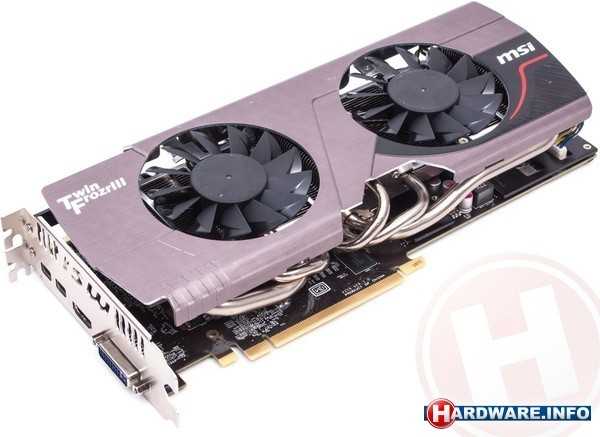 0 0 |
5.0 | 5.0 | 5.0 | 5.0 | 5.0 |
| DirectX | 11 | 11 | 11 | 11 | 11.1 | 11.1 |
| Stream Processors | 480 (1D) | 512 (1D) | 1408 (352 4D) | 1536 (384 4D) | 1792 (1D) | 2048 (1D) |
| Stream processor frequency | 1464 MHz | 1544 MHz | 800 MHz | 880 MHz | 800 MHz | 925 MHz |
| Texture blocks | 60 | 64 | 88 | 96 | 112 | 128 |
| Raster Operations Pipelines (ROP) | 40 | 48 | 32 | 32 | 32 | 32 |
| Maximum power consumption | 219 W | 244 W | 200 W | 250 W | 200W | 250 W |
| Minimum power consumption | — | 30-32W | 20W | 20W | 2. 6W 6W |
2.6 W |
| CrossFire/SLI | SLI | SLI | CrossFireX | CrossFireX | CrossFireX | CrossFireX |
The Radeon HD 7950 graphics card is based on the same GPU as the Radeon HD 7970, namely Tahiti with a huge number of transistors — 4.3 billion. Although not all of them are used. If we take into account the number of stream processors involved, then we get about 3.7 billion active transistors from the Tahiti Pro. For a Radeon HD 79 graphics card50, there are 1792 stream processors, which are divided into 28 computing units (CU) with four SIMDs with 16 ALUs in each. We’ve already covered the «Graphics Core Next» architecture in detail in the Radeon HD 7970 article, so we won’t repeat it. The texture units have also been cut down to 112. The number of raster operations pipelines (ROPs) AMD left at the same level — 32.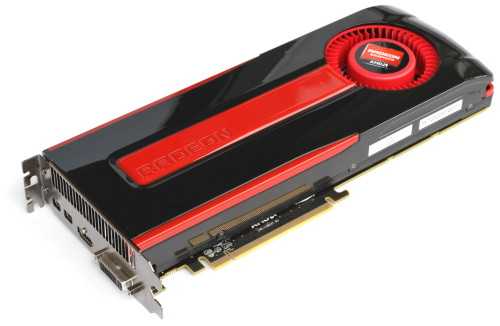 The theoretical compute performance of the Radeon HD 7970 is 3.97 teraflops, but the Radeon HD 7950 it was reduced to 2.87 teraflops, according to AMD.
The theoretical compute performance of the Radeon HD 7970 is 3.97 teraflops, but the Radeon HD 7950 it was reduced to 2.87 teraflops, according to AMD.
In addition to architectural compromises, AMD also reduced the clock speed. The GPU operates in the reference version at a frequency of 800 MHz, and the memory at 1250 MHz. The memory capacity of 3072 MB is the same as that of the Radeon HD 7970, as is the 384-bit interface. But due to the lower clock speed, the Radeon HD 7950 delivers 240 GB/s of memory bandwidth. However, it is significantly higher than that of the NVIDIA GeForce GTX 580 video card, which gives 192 GB/s. The maximum heat dissipation is listed by AMD at 200W, although the graphics card should consume less power in games. At idle, thanks to ZeroCore Power Technology, AMD was able to reduce power consumption to 2.6W. In our tests, we also measure power consumption in idle mode, but with the display on.
As with the Radeon HD 7970, GPU-Z still incorrectly specifies pixel and texture bandwidth for the Tahiti GPU.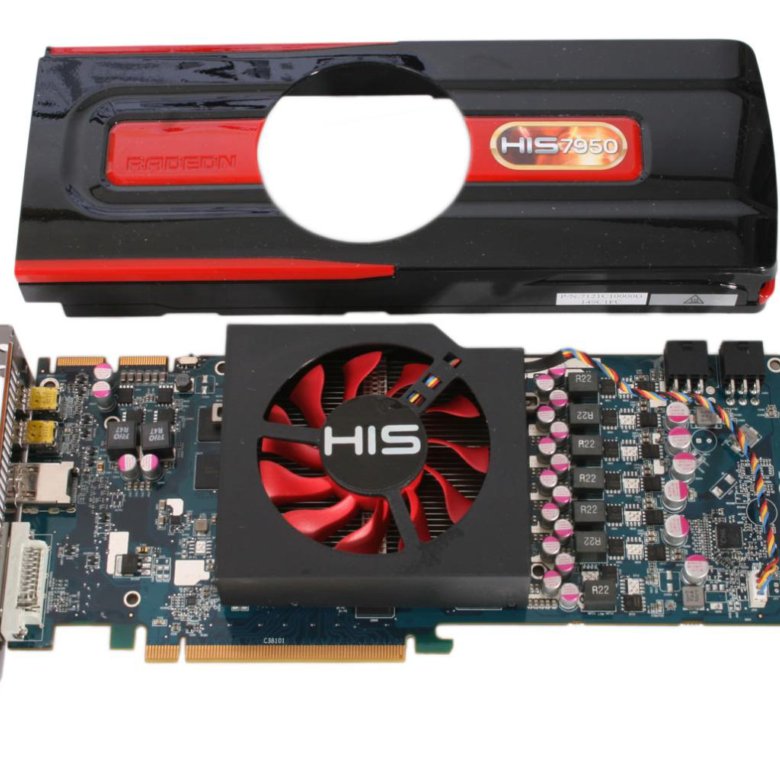 At a clock speed of 800 MHz, the GPU gives 25.6 Gpixel / s and 89.6 Gtexel/s. Also, for the Radeon HD 7950, the memory bandwidth is incorrect, because the utility incorrectly determines it at 1375 MHz — in fact, the memory operates at 1250 MHz, and provides 240 GB / s. With all the theory behind, let’s take a closer look at the Radeon HD 7950 reference design.0001
At a clock speed of 800 MHz, the GPU gives 25.6 Gpixel / s and 89.6 Gtexel/s. Also, for the Radeon HD 7950, the memory bandwidth is incorrect, because the utility incorrectly determines it at 1375 MHz — in fact, the memory operates at 1250 MHz, and provides 240 GB / s. With all the theory behind, let’s take a closer look at the Radeon HD 7950 reference design.0001
The Radeon HD 7950 graphics card was released by AMD, release date: 31 January 2012. At the time of release, the video card cost $449. The video card is designed for desktop computers and is built on the GCN 1.0 architecture, codenamed Tahiti.
Core clock in Boost mode — 1250 MHz. Texturing speed — 89.6 GTexel / s. Number of shader processors — 1792. Floating point performance — 2,867 gflops. Technological process — 28 nm. The number of transistors is 4,313 million. Power consumption (TDP) — 300 Watt. nine0005
Memory type: GDDR5. The maximum memory size is 3 GB. Memory bus width — 384 Bit. Memory frequency — 1250 MHz. The memory bandwidth is 240 GB/s.
The memory bandwidth is 240 GB/s.
Benchmarks
| Geekbench OpenCL |
|
|
||||
| CompuBench 1.5 Desktop Face Detection |
|
|
||||
| CompuBench 1.5 Desktop Ocean Surface Simulation |
|
|
||||
| CompuBench 1.5 Desktop T-Rex |
|
|
||||
| CompuBench 1.5 Desktop Video Composition |
|
nine0445 | ||||
| 383.037 Frames/s |
69.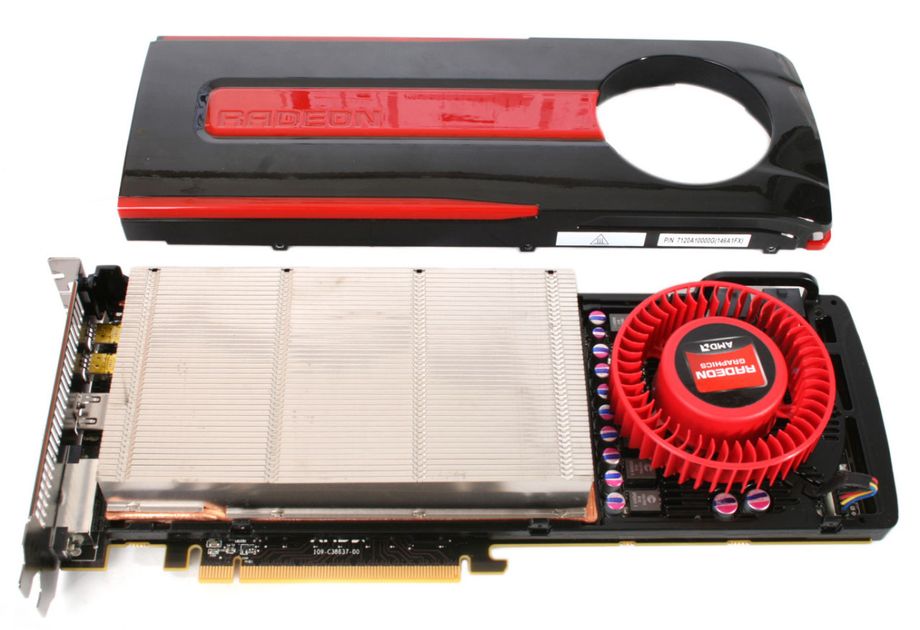 230 Frames/s 230 Frames/s |
Bitcoin Mining
| Top 1 GPU |
| This GPU |
| 343.810 mHash/s |
Car Chase Offscreen
| Top 1 GPU |
| This GPU |
| 7988 Frames |
 0
0 Manhattan
| Top 1 GPU |
| This GPU |
| 3699 Frames |
T-Rex
| Top 1 GPU |
| This GPU |
| 3359 Frames |
Car Chase Offscreen
| Top 1 GPU |
| This GPU |
 000 Fps
000 Fps | 7988.000 Fps |
Manhattan
| Top 1 GPU |
| This GPU |
| 3699.000 Fps |
T-Rex
| Top 1 GPU |
| This GPU |
3359. 000 Fps 000 Fps |
Graphics Score
| Top 1 GPU |
| This GPU |
nine0019
| Name | Meaning |
|---|---|
| Geekbench — OpenCL | 82144 |
| CompuBench 1.5 Desktop — Face Detection | 63.740 mPixels/s |
| CompuBench 1.5 Desktop — Ocean Surface Simulation | 1177.395 Frames/s |
| CompuBench 1.5 Desktop — T-Rex | 5.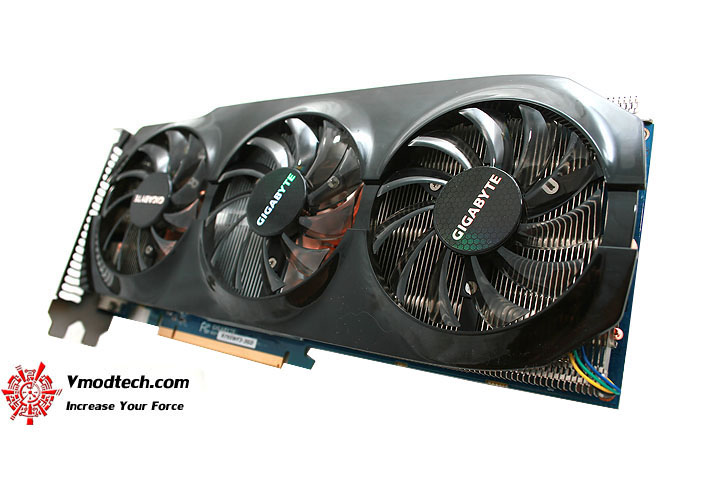 685 Frames/s 685 Frames/s |
| CompuBench 1.5 Desktop — Video Composition | 69.230 Frames/s |
| CompuBench 1.5 Desktop — Bitcoin Mining | 343.810 mHash/s |
| GFXBench 4.0 — Car Chase Offscreen | 7988 Frames |
| GFXBench 4.0 — Manhattan | 3699 Frames |
| GFXBench 4.0 — T-Rex | 3359 Frames |
| GFXBench 4.0 — Car Chase Offscreen | |
| GFXBench 4.0 — Manhattan | 3699.000 Fps |
| GFXBench 4.0 — T-Rex | 3359. 000 Fps 000 Fps |
| 3DMark Fire Strike — Graphics Score | 1920 |
Features
| Architecture | GCN 1.0 |
| Codename | Tahiti |
| Design | AMD Radeon HD 7000 Series |
| Issue date | 31 January 2012 |
| Price at first issue date | $449 |
| Place in the ranking | 403 |
| Type | Desktop |
| Boost core clock | 1250MHz |
| Compute 9 conveyors0019 | 28 |
| Floating point performance | 2. 867 gflops 867 gflops |
| Process | 28nm |
| Number of shaders | 1792 |
| Stream Processors | 1792 |
| Texturing speed | 89.6 GTexel/s |
| Power consumption (TDP) | 300 Watt |
| Number of transistors | 4,313 million |
|
nine0019 | |
| Video connectors | 1x DVI, 1x HDMI, 2x mini-DisplayPort |
| DisplayPort support | |
| Dual-link DVI support | |
| Eyefinity | |
| HDMI | |
| Number of Eyefinity Displays | 6 |
| VGA | |
| Tire | PCIe 3.
|

 258 Frames/s
258 Frames/s